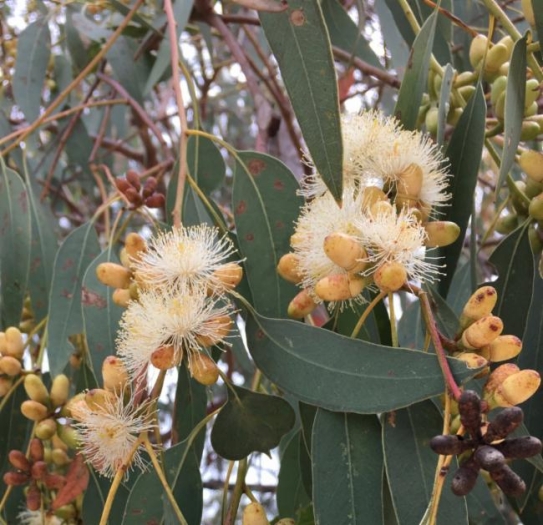Orange Gum
(Eucalyptus prava)
Orange Gum (Eucalyptus prava)
/
/

Jayn Hobba
CC BY 3.0 au
Image By:
Jayn Hobba
Recorded By:
Copyright:
CC BY 3.0 au
Copyright Notice:
Photo by: Jayn Hobba | License Type: CC BY 3.0 au | License URL: https://creativecommons.org/licenses/by/3.0/au/deed.en | Uploader: Gderrin | Publisher: Wikimedia Commons | Title: Eucalyptus_prava_buds.jpg | Notes: {{Information |Description ={{en|1=Coolgardie Esperance Highway WA. Salmon Gums We regretfully tore ourselves away from the delights of Esperance to head inland to Norseman on the edge of the Nullabor Desert. The Salmon Gum (Eucalyptus salmonophloi... |


















Estimated Native Range
Summary
Eucalyptus prava, commonly known as Orange Gum, is an evergreen tree native to the dry sclerophyll forests and woodlands of Eastern Australia. It typically grows to a height of 15 meters (49 feet) and develops a lignotuber, which allows it to resprout after fire or other damage. The tree is characterized by its smooth, mottled grey, orange, and reddish-brown bark, which peels away in flakes to reveal new bark beneath. Adult leaves are lance-shaped or curved, providing a distinctive appearance. Flower buds are presented in groups of seven, leading to white flowers that are not particularly showy but are attractive to a variety of pollinators. The fruit is cup-shaped or hemispherical.
Orange Gum is valued for its striking bark, which adds visual interest to the landscape throughout the year. It is well-suited to cultivation in parks and large gardens, especially in regions with a Mediterranean climate. This species is drought-tolerant, requiring low amounts of water once established, and thrives in well-drained soils. It prefers full sun but can tolerate some shade. While it is generally low-maintenance, it can be susceptible to psyllids and other sap-sucking insects. Gardeners should be aware that Eucalyptus trees can have aggressive root systems and should be planted away from structures and pipes.CC BY-SA 4.0
Orange Gum is valued for its striking bark, which adds visual interest to the landscape throughout the year. It is well-suited to cultivation in parks and large gardens, especially in regions with a Mediterranean climate. This species is drought-tolerant, requiring low amounts of water once established, and thrives in well-drained soils. It prefers full sun but can tolerate some shade. While it is generally low-maintenance, it can be susceptible to psyllids and other sap-sucking insects. Gardeners should be aware that Eucalyptus trees can have aggressive root systems and should be planted away from structures and pipes.CC BY-SA 4.0
Plant Description
- Plant Type: Tree
- Height: 35-50 feet
- Width: 35-45 feet
- Growth Rate: Moderate
- Flower Color: White
- Flowering Season: Spring, Summer
- Leaf Retention: Evergreen
Growth Requirements
- Sun: Full Sun
- Water: Low
- Drainage: Medium
Common Uses
Bee Garden, Bird Garden, Butterfly Garden, Drought Tolerant, Fragrant, Hummingbird Garden, Low Maintenance
Natural Habitat
Dry sclerophyll forests and woodlands of Eastern Australia
Other Names
Common Names:
Scientific Names: , Eucalyptus prava,
GBIF Accepted Name: Eucalyptus prava L.A.S.Johnson & K.D.Hill